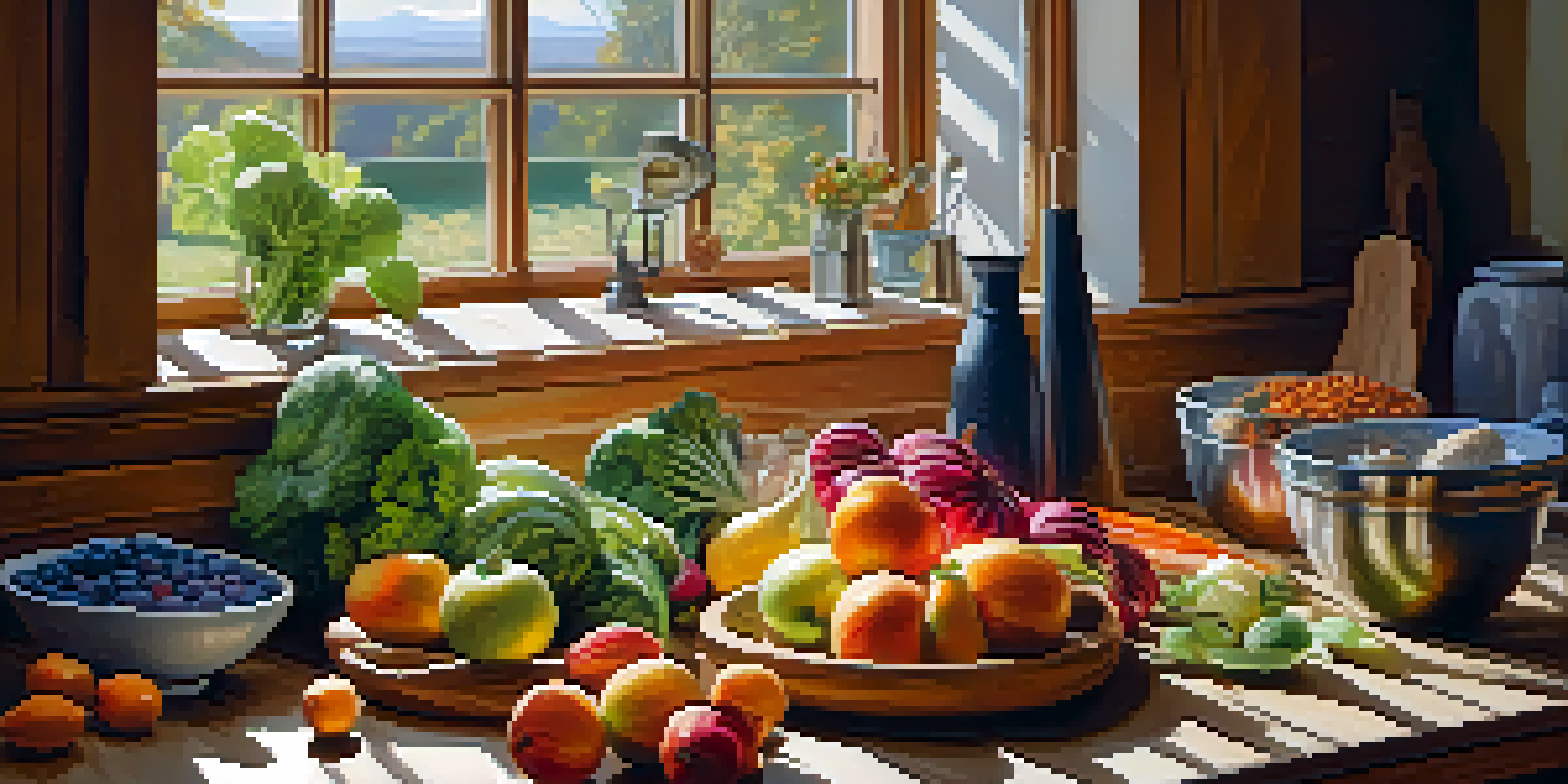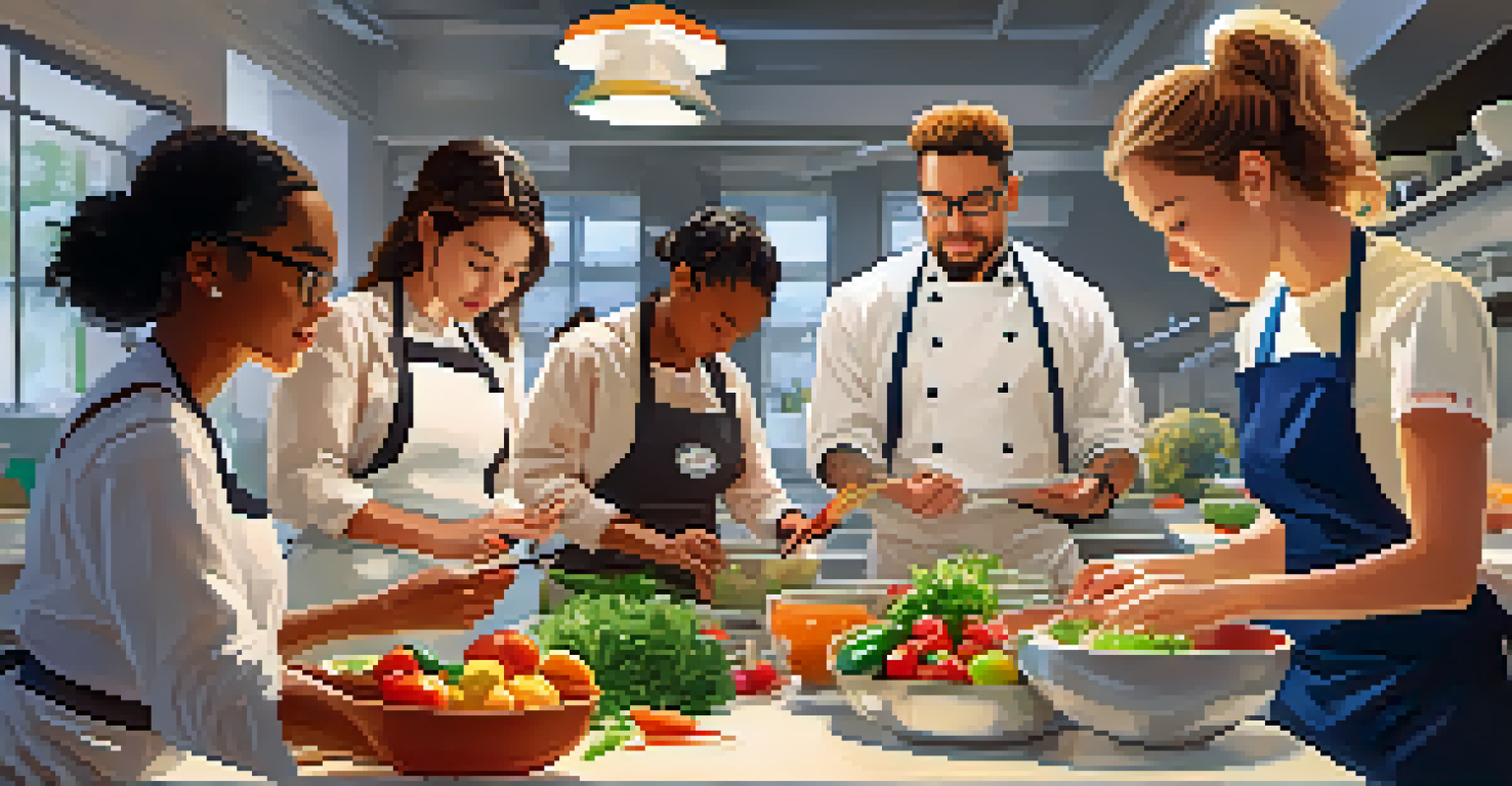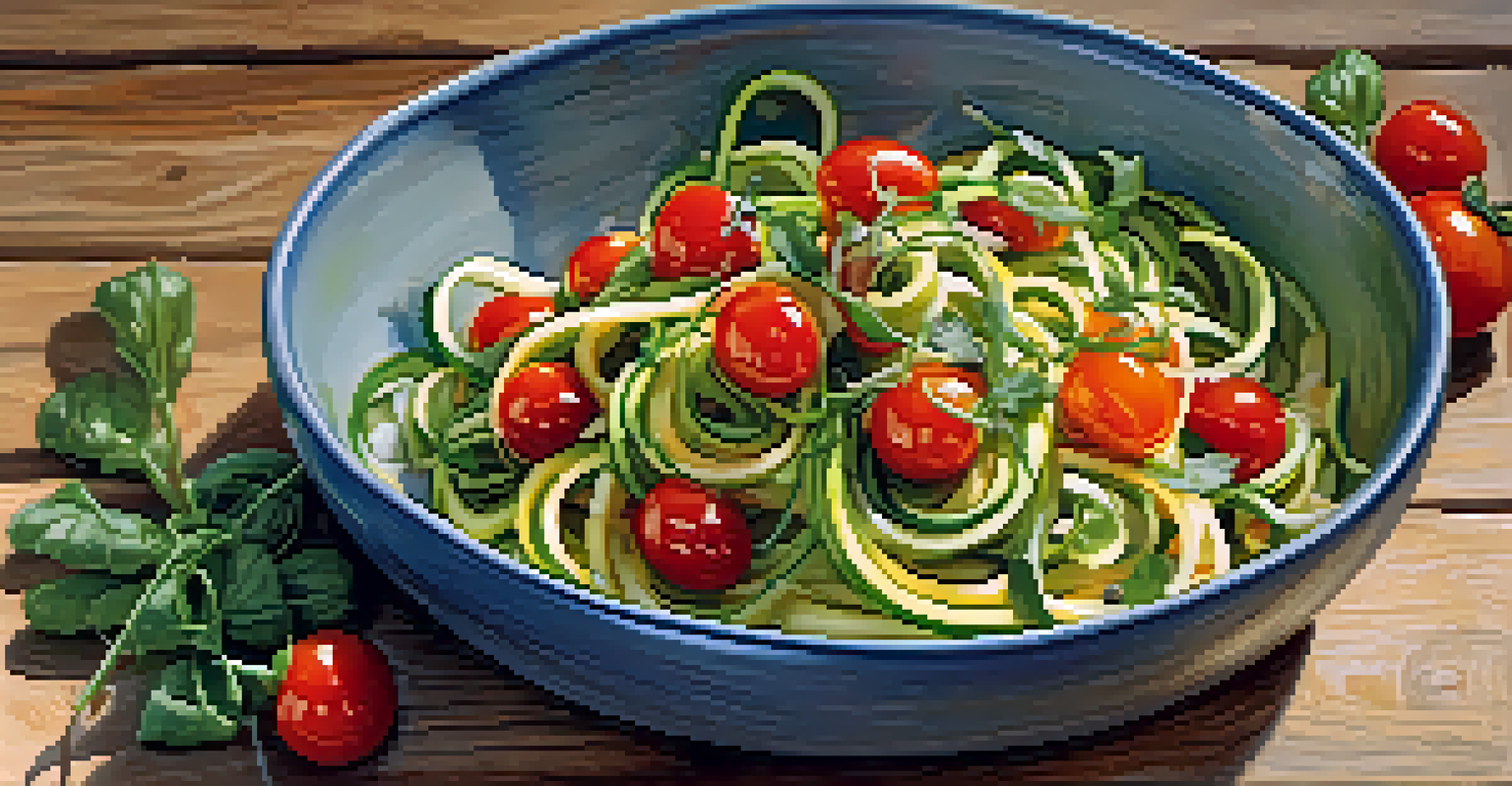How to Choose the Right Raw Food Cooking Class for You

Understand What Raw Food Cooking Means
Raw food cooking emphasizes the use of uncooked ingredients, typically focusing on fruits, vegetables, nuts, and seeds. This approach aims to maximize the nutritional value of food while promoting a healthier lifestyle. Understanding the philosophy behind raw food is vital before diving into classes, as it shapes the techniques and recipes you'll learn.
Let food be thy medicine and medicine be thy food.
Many raw food diets avoid processed foods and emphasize organic, fresh ingredients. This can be a significant lifestyle shift, and knowing what to expect can enhance your experience. For example, consider how you feel about eating zucchini noodles instead of traditional pasta; this mindset shift is at the core of raw food cooking.
By grasping the essence of raw food cooking, you can better determine if it's the right fit for your culinary journey. It sets the stage for exploring various classes that align with your personal goals, whether they are dietary, ethical, or simply for the love of cooking.
Identify Your Cooking Skill Level
Before enrolling in a raw food cooking class, it's essential to assess your current cooking skills. Are you a beginner who struggles with basic knife techniques, or are you an experienced cook looking to expand your repertoire? Classes often cater to different skill levels, so understanding where you stand can help guide your choice.

For instance, if you're just starting, a class focusing on foundational skills, like preparing simple salads and smoothies, may be ideal. On the other hand, if you’re more advanced, you might seek out classes that delve into complex recipes or specialized techniques, such as dehydrating or fermenting.
Understand Raw Food Cooking Basics
Raw food cooking focuses on uncooked ingredients to enhance nutrition and promote a healthier lifestyle.
Being honest about your cooking experience allows you to select a class that challenges you without overwhelming you. This balance is crucial for enjoying the learning process and building confidence in your raw food preparation skills.
Consider Your Dietary Preferences and Restrictions
Raw food cooking can encompass a wide range of dietary preferences, from vegan to gluten-free. Before choosing a class, reflect on your own dietary needs and preferences. Are you looking for a strictly vegan approach, or do you want to include some raw dairy or honey in your recipes?
Eating raw food is not just about nutrition; it’s a lifestyle that brings you closer to nature.
Some classes may focus entirely on specific dietary requirements, such as raw vegan cuisine, while others might offer a broader perspective. Understanding these nuances ensures that the class you choose aligns with your nutritional goals and lifestyle choices.
By selecting a class that respects your dietary restrictions, you'll feel more comfortable and engaged. This consideration will enhance your learning experience and ensure you're excited about the dishes you create.
Research Instructors’ Qualifications and Experience
The instructor plays a pivotal role in your learning journey, so it's vital to research their qualifications and experience in raw food cooking. Look for instructors with a strong background in nutrition, culinary arts, or specific certifications related to raw food preparation. Their expertise can greatly influence the quality of the class and the knowledge you gain.
Consider reading reviews or testimonials from previous students to get a sense of the instructor's teaching style and effectiveness. An engaging instructor can make even the most complex techniques feel manageable and enjoyable, sparking your passion for raw food cooking.
Assess Your Cooking Skill Level
Knowing your cooking abilities helps you choose a class that matches your experience, ensuring an enjoyable learning process.
Finding the right teacher can transform your experience, making it not just educational but also fun. A skilled instructor can inspire you to experiment and create your raw culinary masterpieces.
Look for Class Formats That Suit Your Learning Style
Raw food cooking classes come in various formats, from hands-on workshops to online courses. Identifying your preferred learning style can help you choose a format that keeps you engaged and motivated. If you thrive in an interactive environment, a hands-on class where you can practice techniques might be best for you.
Alternatively, if you have a busy schedule or prefer to learn at your own pace, online classes can be a flexible option. Many platforms offer comprehensive raw food courses that allow you to revisit lessons and experiment in your own kitchen.
Considering how you learn best will lead to a more fulfilling educational experience. Whether in-person or online, the right format can make all the difference in your raw food journey.
Evaluate Class Duration and Frequency
When selecting a raw food cooking class, pay attention to its duration and how often it meets. Some classes may be weekend workshops, while others could be part of a multi-week series. Consider your schedule and how much time you can realistically dedicate to learning raw food techniques.
For example, if you’re looking for a quick introduction, a single-day workshop may be sufficient. However, if you’re eager to dive deeper into raw food preparation, a longer course that meets weekly could be more beneficial, allowing you to practice and refine your skills over time.
Consider Dietary Preferences
Reflecting on your dietary needs ensures you select a raw food class that aligns with your nutritional goals and lifestyle.
Balancing class duration with your availability helps ensure that you stay committed and engaged. This thoughtful approach can lead to a more rewarding and effective learning experience.
Check Class Reviews and Testimonials
Before making your final decision, take the time to check reviews and testimonials from past students. Many cooking schools and instructors provide feedback on their websites or social media pages. Reading these insights can give you a clearer picture of what to expect and help you gauge the overall quality of the class.
Look for comments about the instructor’s teaching style, the class environment, and the types of recipes covered. Positive reviews can indicate a supportive atmosphere, while constructive criticism can inform you of potential challenges.

By considering the experiences of others, you can make a more informed decision that aligns with your expectations. This step is crucial for ensuring a satisfying and enjoyable cooking class experience.
Budgeting: Finding the Right Price Point
Raw food cooking classes can vary significantly in price, so it's essential to establish a budget before you start your search. Classes may range from affordable community workshops to more expensive sessions led by renowned chefs. Knowing your budget helps narrow down options and avoids any financial strain.
Consider the value offered in each class—more expensive options might include additional resources like recipe books, ingredients, or personalized feedback. Weighing these factors against your budget will help you make a decision that feels right for you.
Finding a class that fits your budget doesn’t mean sacrificing quality. With some research, you're likely to discover a range of options that offer excellent instruction at a price point that works for you.